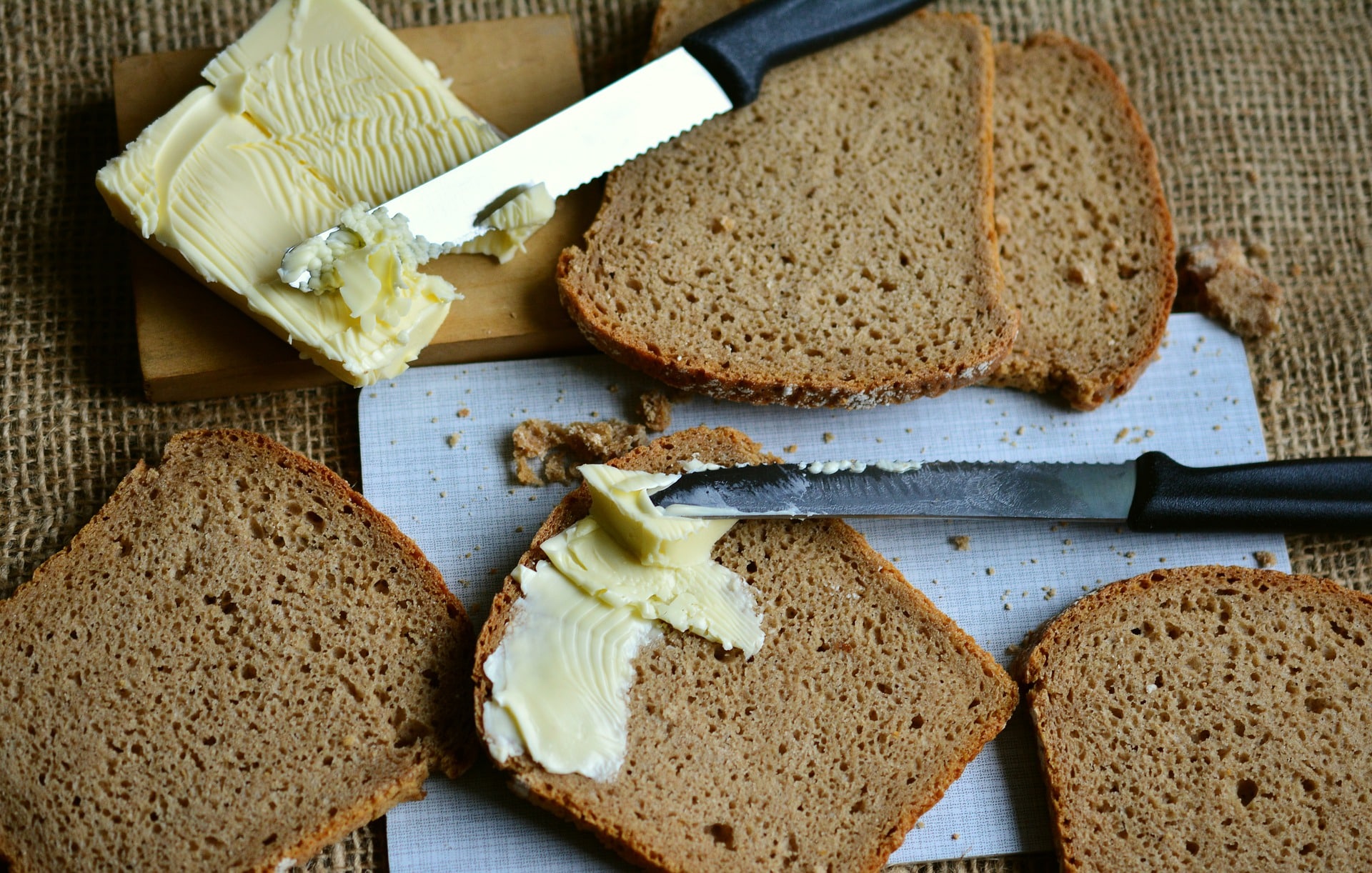Butter
When eating butter, there is a taste of a tender creamy oiliness that comes out of the milk. Since butter was hard to find and expensive, people traditionally consumed oil and butter became synonymous to well-being and prosperity.
For the Mediterranean people who were fed almost exclusively with olive oil, butter was an expensive and rare food, a sign of luxury. In the Middle Ages butter was one of the forbidden foods during the Great Lent. This was not particularly costly for the inhabitants of the South, who mainly cooked with oil, but for the populations of the North, where butter was the main fat in their diet, fasting meant a great deal of deprivation. For parishioners who hoped to escape the drastic religious rule, permission was given for them to keep on eating ‘fat’ in return for a donation to the church which funded the construction of the La Tour de Beurre tower at the Cathedral of Rouen.
Fresh butter is made from cow’s milk. However, the milk used as raw material may also be sheep or goat milk and more rarely from buffalo or camel milk. Nowadays butter is not produced from unpasteurized milk anymore, as this would not last more than a few days in the refrigerator. Fresh butter has 80% to 82% fat and its colour varies from whitish to yellow, depending on the nutritional habits of the animals from which butter is produced and it can be found unsalted and salted.
It is said that buttered bread is attributed to Copernicus while in his effort to combat the spread of the plague.
